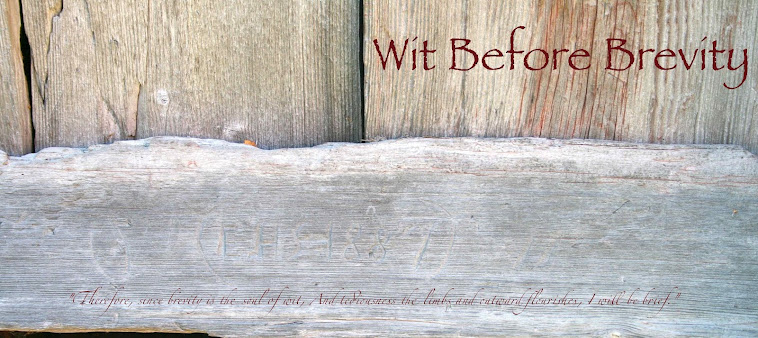Once I made the leap to start a blog, I decided that I wanted a theme for it, beyond just the obvious – scrapbooking and other paper arts. So, to begin, here is a bit about me and a bit about what you can expect from this little corner of the web.
I’m a historian by training, a cultural historian really, as my degree was completed in a theatre history program. (And that also explains all the Shakespeare and theatre references peppered throughout the blog.) So I come to this scrapbooking hobby (obsession, really) with a particular interest in what historians refer to as “primary” documents. In academic lingo, this means simply that the source you’re reading or analyzing has not been filtered in any way through another party. Typical primary source documents are letters, journals, diaries, and in literary history, the poems, dramas, and fictions in their original form.
So, what does this have to do with scrapbooking?
From my historian’s perspective, no matter how much bling, flower power, or patterned paper we glue on to the page, today’s scrapbooks are all just a few steps along the evolutionary road from (mostly) women’s diaries, journals, letters, scrapbooks… throughout history. When a historian looks back to the 19th century to try to understand what an average woman’s life was like, some of the best sources we can find are those that may have been penned in her own hand – a diary, letters to a sister halfway across the country or across the ocean, or even, sometimes, if we’re lucky, a very consciously created memoir for her children. And they’re “good” sources for a few reasons. They’re primary sources – first-hand accounts. But they’re also incredibly exciting for a historian to find and read. To simply hold. They are a direct link, a conduit.
I was on the phone with my father yesterday, and the story he related to me got me started thinking about this again. My aunt (his sister) apparently has at least one of their mother’s diaries. My grandmother was tough pioneer stock, raised in a farming family in southern Minnesota before moving to the North Dakota prairie to start her own family, just before the Great Depression and Dust Bowl years. I had no clue that Grandma had left any diaries or journals, but as I think about it, it makes sense. She was college-educated, having studied to become a teacher before marrying my grandfather, and she was inquisitive, interested in the world and the people on it, through her entire life. She was a letter-writer, and I’ve saved many of the cards and letters that I received from her over the years.
As my aunt sat reading her mother’s words, in her mother’s own hand, she suddenly began to realize what life must have been like on a day to day basis for her mother and father, as they joyously celebrated the births of (eventually) seven children, and then toiled and worried and cried as they fought to feed their children. My grandmother, in the pages of her diary, recorded how much money she had earned doing extra work, or how much money my grandfather had earned on odd labor or livestock sales.
After reading several pages in Grandma’s diary, my aunt called my father, and as they began to talk about those very lean years, and about how little most of the younger children knew about just how hard it was, my father (the oldest child) and my aunt (the second to the youngest) together began to put the pieces of their histories together. The conversation may not have happened, or at least would not have happened in such a pointed fashion, without that diary, without that very tangible connection to my Grandma’s life as wife and mother on the North Dakota prairie.
As a historian, but also as a granddaughter, daughter, and mother, I’m deeply connected to the genealogy of journaling and scrapbooking as I sit down to work on one of these highly crafty pages that we seem to be producing today. What I desperately want to retain, even among all the product and color and interest in design, is that sense of a primary document that my children can hold when I am long gone. It’s not simply a “memory” that I am recording, in other words. It is my legacy, my record for my children of not just what happened, but how I experienced it, or how I saw them experience it. I’m not an overly emotional person in my writing (though in my daily life, it’s another story!). So my own journaling doesn’t tend to get incredibly mushy. Sometimes, it’s simply a story, a story that I could imagine myself wanting to tell one of my kids in 2030, when she’s expecting her first child, or in 2045, when I may be long gone.
While I’ve been consciously aware of how I write and why I write in my own layouts for a while, I only recently began to notice that the industry itself talks about “journaling” in pretty limited ways. I have yet to read an article, for example, that connects our modern scrapbooks to the history of women’s journaling and correspondence. And I have yet to read an article or series of articles that uses “writing pedagogy” – that is, tools to learn the craft of writing – to help scrappers approach their journaling.
I’m not saying that we all have to become great writers. But I do think that learning some very basic writing strategies or tools could help. So, while I retain permission to write about just about anything between these margins, one of the strongest focuses of this blog, at least for the first few months, will be journaling.
If you’ve found me in this first week, I hope you check back!
Exeunt, pursued by bear.
